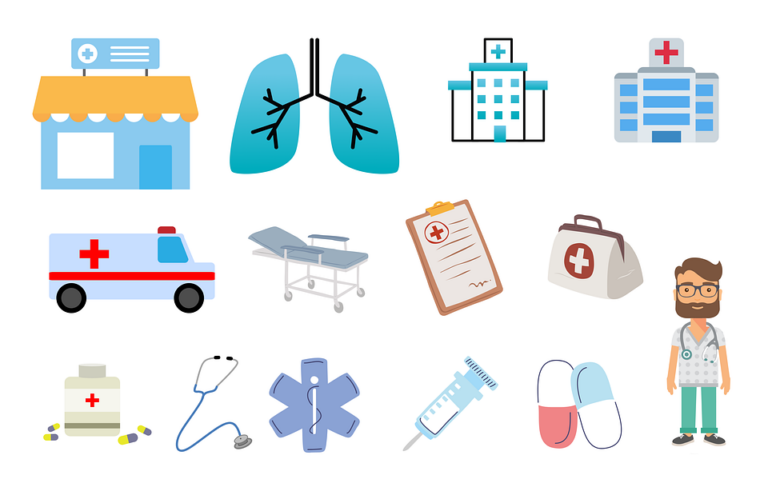Book Appointment Now

The Role of Interdisciplinary Collaboration in Healthcare
In modern healthcare, interdisciplinary collaboration in healthcare has become a cornerstone for improving patient outcomes. It involves the coordinated efforts of professionals from various disciplines—including doctors, nurses, pharmacists, therapists, and social workers—to deliver comprehensive, patient-centered care. Studies indicate that healthcare teams that function cohesively can significantly reduce medical errors, enhance patient satisfaction, and improve overall healthcare efficiency (Reeves et al., 2017). This essay explores the importance of interdisciplinary collaboration in healthcare, its benefits, challenges, and strategies to enhance teamwork for optimal patient outcomes.
Our nursing experts can deliver 100% custom paper about the importance of interdisciplinary collaboration in healthcare according to your order instructions.
Write my nursing essay
Understanding Interdisciplinary Collaboration in Healthcare
Definition and Key Components
Interdisciplinary collaboration in healthcare refers to the integration of expertise and efforts from multiple healthcare professionals to address patient needs holistically. This collaboration is characterized by open communication, shared decision-making, mutual respect, and a patient-centered approach (Zwarenstein et al., 2009). Key components include:
- Effective Communication: Transparent sharing of patient information across disciplines.
- Mutual Respect: Recognition of each professional’s expertise and contribution.
- Shared Decision-Making: Joint development of treatment plans tailored to patient needs.
- Coordinated Care Plans: Integration of various medical, psychological, and social aspects of patient care.
Importance in Healthcare Settings
Interdisciplinary collaboration is essential in hospitals, primary care settings, rehabilitation centers, and long-term care facilities. It ensures that patients receive a well-rounded approach to treatment, reducing fragmented care and medical errors (Institute of Medicine, 2015). By leveraging the expertise of various professionals, healthcare teams can implement evidence-based practices and improve patient outcomes.
Benefits of Interdisciplinary Collaboration
Improved Patient Outcomes
Research shows that interdisciplinary teams contribute to better patient outcomes, including reduced hospital readmissions, shorter hospital stays, and improved recovery rates (O’Daniel & Rosenstein, 2008). By incorporating different perspectives and expertise, these teams provide comprehensive assessments and individualized treatment plans that lead to superior care quality.
Reduction in Medical Errors
Medical errors are a significant concern in healthcare, leading to adverse patient outcomes and increased costs. Interdisciplinary collaboration enhances patient safety by improving communication and coordination among healthcare providers (Kohn et al., 2000). For example, when nurses, pharmacists, and physicians collaborate on medication management, the risk of prescription errors is significantly reduced.
Enhanced Patient Satisfaction
Patients benefit from a team-based approach as it fosters a sense of security and trust in their healthcare providers. A study by Schmutz & Manser (2013) found that patients who received care from interdisciplinary teams reported higher satisfaction levels due to improved communication, faster problem resolution, and personalized treatment.
Increased Efficiency and Cost-Effectiveness
Interdisciplinary collaboration promotes efficiency by streamlining care delivery processes, minimizing redundant tests, and reducing hospital stays. This, in turn, lowers healthcare costs while maximizing resource utilization (Gittell et al., 2010). A coordinated approach to care also decreases administrative burdens, allowing healthcare professionals to focus more on patient needs.
Challenges in Interdisciplinary Collaboration
Communication Barriers
One of the biggest obstacles to effective interdisciplinary collaboration is communication breakdowns. Miscommunication between team members can lead to errors, delays in treatment, and patient dissatisfaction (Leonard et al., 2004). Differences in terminologies, professional jargon, and hierarchical structures can further complicate interactions.
Role Ambiguity and Professional Boundaries
Confusion regarding roles and responsibilities can create friction among team members. Some professionals may feel their expertise is overlooked or undervalued, leading to reluctance in sharing insights or collaborating effectively (Hall, 2005). Clearly defining each team member’s role is essential to fostering mutual respect and cooperation.
Resistance to Change
Some healthcare professionals may be resistant to interdisciplinary collaboration due to deeply ingrained traditional practices and hierarchical systems. Overcoming this resistance requires cultural shifts within healthcare institutions that promote teamwork and shared accountability (Reeves et al., 2017).
Time Constraints and Workload Issues
Healthcare providers often face time constraints and heavy workloads, making it challenging to engage in effective interdisciplinary collaboration. Implementing strategies such as structured team meetings, digital communication tools, and shared decision-making frameworks can help mitigate this challenge (Zwarenstein et al., 2009).
Strategies for Enhancing Interdisciplinary Collaboration
Implementing Effective Communication Strategies
To improve collaboration, healthcare teams must adopt effective communication tools such as:
- Electronic Health Records (EHRs): Facilitate real-time access to patient information for all team members.
- SBAR (Situation, Background, Assessment, Recommendation): A structured communication framework to enhance clarity and efficiency (Haig et al., 2006).
- Interdisciplinary Rounds: Regular team meetings to discuss patient progress and treatment plans collaboratively.
Encouraging Teamwork and Mutual Respect
Fostering a culture of teamwork requires:
- Team-Building Training: Workshops that focus on team dynamics, conflict resolution, and communication skills.
- Leadership Support: Encouraging leaders to promote an environment of inclusion and shared decision-making.
- Recognition Programs: Acknowledging contributions from all team members to boost morale and motivation.
Integrating Interdisciplinary Education
Healthcare education should emphasize interdisciplinary collaboration from the onset. Universities and training programs should incorporate interdisciplinary coursework, simulations, and clinical rotations where students from various disciplines work together (Institute of Medicine, 2015). This prepares future healthcare professionals to embrace teamwork in their careers.
Leveraging Technology for Coordination
Advancements in technology can facilitate better collaboration through:
- Telemedicine: Enables remote interdisciplinary consultations and decision-making.
- Shared Digital Platforms: Tools like Slack or Microsoft Teams for real-time discussions and updates.
- Artificial Intelligence (AI) in Patient Care: AI-driven predictive analytics can assist interdisciplinary teams in early diagnosis and treatment planning (Topol, 2019).
Interdisciplinary collaboration plays a vital role in enhancing patient care and improving healthcare efficiency. By integrating diverse professional expertise, healthcare teams can reduce medical errors, improve patient satisfaction, and optimize resource utilization. However, challenges such as communication barriers, role ambiguity, and time constraints must be addressed through effective communication strategies, education, and technological advancements. Healthcare institutions must prioritize fostering a culture of teamwork and mutual respect to ensure that interdisciplinary collaboration remains a fundamental pillar of quality patient care.
References
- Gittell, J. H., Godfrey, M., & Thistlethwaite, J. (2010). Interprofessional collaborative practice and relational coordination: Improving healthcare outcomes. BMJ Quality & Safety, 19(6), 1-6.
- Haig, K. M., Sutton, S., & Whittington, J. (2006). SBAR: A shared mental model for improving communication between clinicians. The Joint Commission Journal on Quality and Patient Safety, 32(3), 167-175.
- Hall, P. (2005). Interprofessional teamwork: Professional cultures as barriers. Journal of Interprofessional Care, 19(1), 188-196.
- Institute of Medicine. (2015). Measuring the impact of interprofessional education on collaborative practice and patient outcomes. National Academies Press.
- Kohn, L. T., Corrigan, J. M., & Donaldson, M. S. (2000). To err is human: Building a safer health system. National Academies Press.
- Leonard, M., Graham, S., & Bonacum, D. (2004). The human factor: The critical importance of effective teamwork and communication in providing safe care. BMJ Quality & Safety, 13(1), i85-i90.
- O’Daniel, M., & Rosenstein, A. H. (2008). Professional communication and team collaboration. Patient Safety and Quality: An Evidence-Based Handbook for Nurses.
- Reeves, S., Pelone, F., Harrison, R., Goldman, J., & Zwarenstein, M. (2017). Interprofessional collaboration to improve professional practice and healthcare outcomes. Cochrane Database of Systematic Reviews.
- Schmutz, J., & Manser, T. (2013). Do team processes really have an effect on clinical performance? British Journal of Anaesthesia, 110(4), 529-540.
- Zwarenstein, M., Goldman, J., & Reeves, S. (2009). Interprofessional collaboration: Effects of practice-based interventions on professional practice and healthcare outcomes. Cochrane Database of Systematic Reviews.




